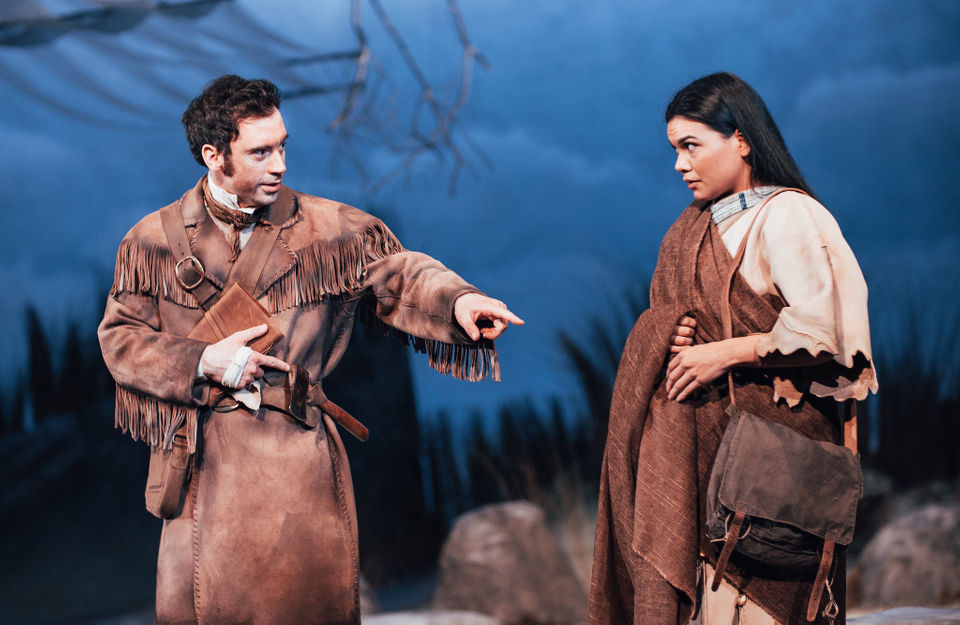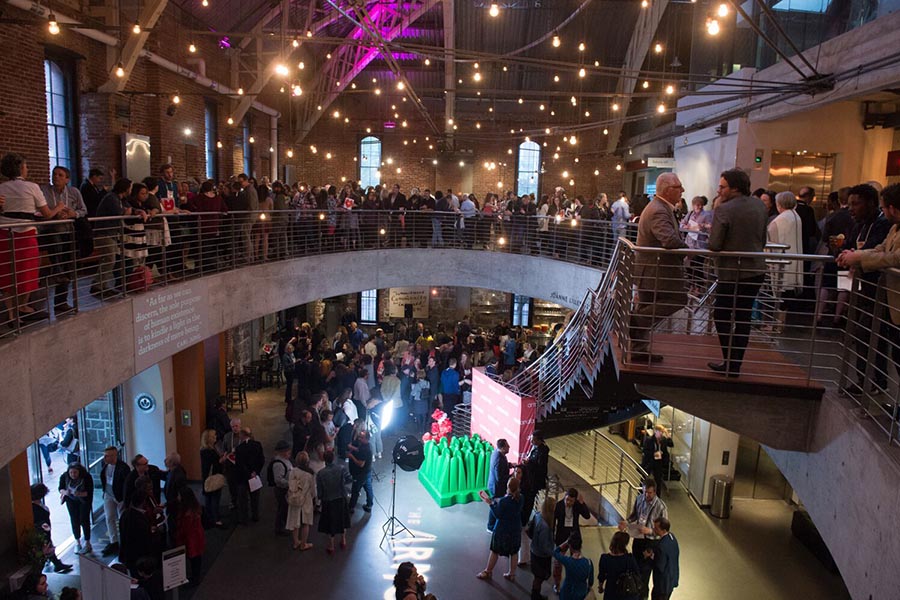How do regional performing arts organizations attract new audiences? It’s a question that’s been worried over, and written about, for many years. Even if the will to diversify audiences exists, there might not be the will to gamble financially on ideas which may or may not bear fruit.
The Wallace Foundation has set out to find some answers to this question by mitigating that monetary risk. In 2015 it launched its Building Audiences for Sustainability Effort. The grant program selected 26 regional arts organizations across the country and awarded them funds, totaling $52 million, explicitly for developing new audiences. These organizations span the fields of theatre, music, opera, and dance. Among this cohort: Portland Center Stage in Oregon.
As part of the selection process, PCS had to choose a target audience they hoped to engage. The company began digging through demographic data on Portland, trying to get a better understanding of the city. “Our initial idea was to target audience racial and ethnic diversity,” says Cynthia Fuhrman, PCS’s managing director. “But it became clearer and clearer to me that we should target age.” At the time, in 2013, Portland had seen a huge influx of transplants between the ages of 25 and 45, and this population was now the most diverse age group in the city. Targeting them, Fuhrman reasoned, was a way to kill two birds with one stone, “tapping the most diverse population of the city while focusing on the age group.”
PCS received $770,000 for the first two-year cycle of the grant. “Nonprofits never have research and development money,” says Fuhrman. “We budget to the minimum we need to be fiscally responsible and to break even, so we can never test things. That’s what made this grant so important.” The money was spent on four initiatives: a massive audience research project; an increase-in-audience-engagement program; a series of commissioned plays set in the Pacific Northwest; and an audience loyalty program.
For the audience research project PCS hired two local firms to learn more about who was coming to PCS, and, more importantly, who wasn’t. The firms surveyed three groups of 25- to 45-year-olds: current audience members, lapsed audience members (defined as folks who hadn’t been to a show in two years or more), and inclined community members (people interested in arts and culture events who’d never been to a PCS show). The inclined group were brought to PCS as part of the project. All groups were interviewed about their experiences at PCS, their satisfaction with the organization, and any barriers to attendance that prevented or discouraged them from coming.
The surveys provided some expected results (i.e., digital advertising has surpassed print) and some surprises that led to new marketing practices. For example, all those surveyed mentioned that if they can’t avoid advertising, they tend to pay attention. PCS decided to leverage that insight into a billboard campaign. They couldn’t use funds from the Wallace grant to pay for this, but they managed to find outside funding to try it out. Ads for shows started appearing on the outsides of buses, and billboards about PCS popped up around town.
Having ongoing focus also shaped the audience engagement work. A lot of the programming took the form pre- and post-show events: happy hours, interviews with actors, audience Q&As, collaborations with local nonprofits, and performances by local artists. “The theory was that the value add would deepen people’s commitment to return,” says Fuhrman.
The program enabled Kelsey Tyler, education & community programs director, to hire “4-5 artists every week to create programming, be a host, or engage with our work,” which was itself a kind of community engagement effort, as it meant that “a lot of money was going to artists in our community.”
But interestingly, feedback from the focus groups actually led PCS to reduce the number of engagement programs in the grant’s second year. “We thought we had to do something every night,” says Furhman, which proved “exhausting on staff. But when we pulled back on programming, the numbers actually went up. It was deeper engagement. Quality of the program was more important than quantity.”
PCS had already made a habit of highlighting shows set in, and written by playwrights from, the Pacific Northwest, and these shows always tended to draw in audiences. The company hoped that the Wallace-supported commission program would further capitalize on that interest. The grant allowed PCS to hire a literary manager, a position that had been eliminated during lean times, to run the program. Mary Kathryn Nagle was tapped for the first commission. “It means the world to me to be commissioned,” says Nagle. “It’s an incredible opportunity to work closely with a theatre to breathe life into a play, instead of being forced to create a collaborative piece of art in solitude.”
In keeping with the Northwest theme, the playwright began a script about Sacagawea, but while writing Nagle visited Standing Rock during the Dakota Access Pipeline protests, and ending up weaving that event into her script. The play, Crossing Mnisose, finished its first production earlier this year. “The Wallace Foundation grant made it possible for us to work with Shoshone and Dakota cultural consultants, which is incredibly important,” notes Nagle. “All too often, when American cultural institutions perform Native identity or Native stories, they do it without involving the citizens of the nations whose stories they are sharing. And of course, this would not have been possible if we could not have paid them.”
There are two plays in the commission pipeline still, one by Lauren Yee that is currently being workshopped for the 2020-21 season, and another by Dan O’Brien. A fourth play was commissioned by the project but didn’t end up moving forward. “Those deadlines for a playwright don’t always work,” says Tyler.
Interestingly, market research from the Wallace Foundation grant found that audiences in Portland were in fact not inherently more interested in plays set in the Northwest or written by Northwest playwrights, despite the fact they brought in larger audiences. Results like this, that disconfirm expectations, call for critical analysis. PCS hypothesized that perhaps the greater turnout had to do with better marketing, which might reflect their own internal investment in these shows more than audiences’ enthusiasm, but there is as yet no solid conclusion about why they outperformed.
Another thing that didn’t quite work: the audience loyalty program. It was an idea PCS had kicked around for years before, which the grant allowed the organization to really move forward on it. PCS hired a web developer to create an online loyalty portal which would allow members to earn rewards by attending shows and interacting with PCS online. But, while its launch attracted 3,500 sign-ups, PCS recently put the portal on hiatus, as the program did not integrate with the ticketing platform Tessitura. Because the loyalty app and the database couldn’t talk to each other, it became unwieldy for audience members to use and staff to manage. Fuhrman and the portal developers still hope that integration might be possible in the future.

Evaluation has been a constant part of the grant process. There have been monthly conversations with the Wallace Foundation and cohort meetings to discuss how their various initiatives are going. After the first grant cycle was finished, the Wallace Foundation asked for a self-review from PCS and a proposal of what the second cycle would include. The foundation also offered to do a cost-benefit analysis on any of the activities PCS has started with the funds.
“We chose the engagement program,” says Fuhrman. “Out of the entire cohort this program was one of the few to show demonstrable income benefit.” In the 2016-17 season community events brought in $60,289 in ticket revenue. But PCS also found that community events attracted new and bigger donations to the organization.
When the second, and final, cycle of the grant ends this year PCS will be looking at a budget drop-off of around $300,000. “The grant was designed to be weaned off,” says Fuhrman. “It’s a big challenge when you’ve had that level of funding for four years, and that’s a big part of planning for the 2019-20 budget.” With the funding ending PCS has had to decide how to go forward. What programs can it hold on to and what has to be let go? While revenue has gone up, so have costs. “Thankfully we got some local equity access grants to keep paying to local artists for our engagement program.” And money will continue to be pumped into the commissioning pipeline.
The full report on how PCS and the rest of the cohort’s initiatives panned out will be released eventually, including an independent review by Prof. Francie Ostrower of University of Texas at Austin. But based on what Fuhrman has seen the grant do so far, it has yielded positive results.
“Our audience has grown every year of the grant and we’ve been doing better with younger audiences,” she notes. PCS launched a youth subscription pass in 2017, for patrons 35 and younger, and sold nearly 700 in the first year. “I don’t think we would have had that if we hadn’t laid the groundwork with the marketing campaigns and community programming out of the grant.”
TJ Acena is a writer based in Portland. This article is generously supported by the Wallace Foundation’s Building Audiences for Sustainability initiative.


